You see that picture? That’s one whole year of my junk mail. Almost 33 pounds of it. A 20 inch stack of expensive, forest-destroying, unwanted trash.
And that’s nothing! I’m five years into a crusade to defend my little mailbox from paper spam. A typical Seattle household gets three times as much: 100 pounds a year. In 2009, when I last did a 365-day count, my stack was four inches taller and weighed in at 50 pounds. That was after I’d already spent hours beating back the onslaught with the help of Catalog Choice, the de-junking website. I’ve done more of this tedious work since, opting-out online and calling customer service numbers, and I’ve pushed my tally down first to 33 pounds (for calendar year 2012) and, in the most recent six months, to the equivalent of 26 pounds per year.
Progress, yes, but it’s still an obscenity—to have to work so hard to keep other people from putting litter on my property. It’s also a drain on our communities: hauling away junk mail costs US cities and towns about a billion dollars a year.
Conclusion? Unchanged since 2009: we need a Do Not Mail Registry, just like the Do Not Call registry. Changed dramatically since 2009, however, is the overarching trend: US mail volume is in free fall. More on that below.
The big win in the stack pictured above, which shows my ad-mail from calendar year 2012, was the complete absence of phone books. From 15 pounds and six books, I went to zero. Seattle’s Yellow Pages Opt-Out program worked! Unfortunately, in my 2013 stack (which covers the six months after I spent May aggressively unsubscribing to junk mail), one small phone book appeared, from Frontier Communications. I checked Catalog Choice and saw that I’d already told Frontier to skip me. If Seattle’s Yellow Pages law were still law, Frontier could have been fined for ignoring my request. Unfortunately, the Yellow Pages industry won a court challenge, so the fines are no longer in effect. Aggravating! Naturally, I have torn up the Frontier book and folded its yellow paper into a voodoo doll. I’ve been spending evenings tossing it in the air and catching it on my ice pick.
Just kidding. (Sort of.)
I went to the industry’s own opt-out website, created in response to Seattle’s law, and sent word to Frontier again to keep its advertising pulp off my porch. Fingers crossed. (Bigger good news: Seattle’s phone book count has plummeted because of the law. Only a third as many books are now delivered in the city!) Also good about the 2012 mail pile was the fact that almost all of the repeat offenders I contacted in 2009—Eddie Bauer, Bike Nashbar, the local youth soccer association—had stopped hurling paper at me.
The bad news was that others took up where they left off. Just mention the name of one particular mailer and you’ll see me bare my fangs: RedPlum, an ad purveyor owned by Valassis Interactive, Inc., single-handedly accounted for almost half of my 2012 junk mail, completely filling the gap left by 15 pounds of missing phone books. Every week all year, I got a thick wad of full-color, loose-leaf sales pitches and coupons, fish-wrapped with a sheaf of newsprint and prone to falling apart in my mailbox or floating out of my recycle basket when I carry it to the bin. In the photo atop this article, you can see the RedPlums taking up the bottom half of the stack: more annoying even than Yellow Pages!
Every RedPlum edition I got, my junk-mail vanquishing fantasies grew more malicious: I wanted to scatter all 15 pounds of this ink-smeared invasion of privacy in a Valassis shareholder meeting, like confetti. I wanted to shred it and blow it through the HVAC ducts at Valassis HQ. I wanted to soak it, grind it, and serve it, pink-slime-like, at the Valassis annual barbecue.
You know those colorful folders in which kindergarten teachers send kids’ crayon drawings home to mom and dad? I wanted every one of those folders opened by a Valassis boss to hold a wadded gob of the ads she or he had sent to my house. Right in front might be this particularly choice wrapper.
Valassis has earned a special place in Hell, as far as I’m concerned, but it wasn’t the only new malefactor to invade my mailbox in 2012. A smidgen of my animus extends to the post office. RedPlum mailings are like advertising packets from a Sunday newspaper, and the USPS is now eager to deliver, at a newly discounted rate, such envelope-free circulars everywhere it goes. Here I am, reading my news online to avoid paper waste and carefully peeling the plastic windows off my tissue boxes so I can recycle them, and the post office—long more trusted and beloved than any other federal institution in the United States—is cutting bargains for spammers. Grrr! Similarly, late last year, the Seattle Times started competing with RedPlum by dropping a weekly pile of ads called “Sunday Market” on my stoop, even though I subscribe to the electronic edition of that paper specifically in order to avoid all the newsprint. Just four editions weighed in at 3 pounds.
What did I do? In May, I told RedPlum, through Catalog Choice, to
cease and desist
and 10 weeks later—after nine more bundles of sales pitches—the company finally complied. I phoned to unsubscribe from the Times’ Sunday Market (206-464-2121) and delivery stopped. I also targeted some long-standing offenders. I did a happy dance when I learned that Catalog Choice had added non-catalog mailers to its service. I used this expanded coverage to beg mercy from Comcast, which had sent me a cable-TV pitch every other week all year long, weighing in at a full pound all by themselves; from CenturyLink, which slipped into my box nine unctuous offers of faster Internet; and from the New York Times, which seems unable to figure out that I am a digital subscriber because I don’t want the paper. I also wrote to two local community colleges, which between them sent me a dozen course catalogs in 2012 weighing 2.5 pounds.
Comcast, CenturyLink, and one college all turned the spigot down or off, though the New York Times did not. As proof that no good deed goes unpunished, meanwhile, Bellevue College actually started sending me two of each catalog after I asked for relief. I’ve submitted a complaint, and the college promises to make things right. (I’m hoping the result is not quadruple mailings.)
Stamping out direct mail on your own, even with the help of Catalog Choice, makes you feel like Sisyphus. You’re never done. New intruders endlessly encroach. In the last six months, while I was watching to see if RedPlum (snarl) would leave me alone, I’ve been barraged by the League of Conservation Voters (six times), Unicef (four times), and Harper’s (seven renewal notices in six months). Meanwhile, my insurance and banking company USAA spontaneously restarted my member magazine subscription this summer, after four years of blessed reprieve. I complained this week and got a pledge of redress. I’ve also written to others (I’m looking at you Chase!), and I’m watching to see what they do.
As I have said, ad mail is not the biggest of Cascadia’s challenges, but it ought to be among the easiest to solve. It’s an opportunity for regional leadership. Unwanted mail wastes paper and all the trees, energy, and climate emissions it takes to manufacture and carry 100-pound piles of junk mail to each post box each year, then recycle it again, typically unopened. It also wastes advertisers’ money, driving up costs and prices and suppressing profits.
Defending one letter slot at a time is an unwinnable war. Most people won’t even bother to fight. Individual, voluntary action is a help, but more effective solutions must operate on a larger scale. Enacting Do Not Mail registries in Cascadian states and provinces would likely spark imitation across North America, because
no one loves junk mail.
Well, almost no one.
Direct-mail advertisers—and the printers and paper companies that supply them—are not eager to let you refuse their pabulum. But I’m betting you, like me, do not care much about the likes of Valassis Interactive, Inc. Letter carriers are a more sympathetic lobby. Is their livelihood at stake?
Yes and no. In 2009, my Going Postal comment string was full of postal workers worried about a mass opt-out from junk mail. Since then, the US Postal Service’s finances have gone from bad to worse, and layoffs have ensued. In 2012, the USPS appears to have lost almost 10 cents on every piece of mail it delivered, the largest operating loss in the service’s history, as shown in this chart of profits from 1950 to 2012. (Data here.)
The post office has responded by marketing and discounting itself aggressively to advertisers, and by cutting service. More hard times are undoubtedly ahead.
Postal workers’ jobs are indeed in jeopardy, and I’m concerned for the workers and their families, but the cause of that plunging profit line is not that too many people are refusing junk mail. It’s not junk-mail warriors like me, armed with Catalog Choice, that pose an existential threat. We like the post office and wish it well. (We might, on the other hand, idly wish Valassis would hemorrhage $15 billion in a year, as the USPS did last year). The threat is the Internet—you’ve heard of it? It is eviscerating snail mail, not only for advertising but also, and especially, for bills, newsletters, and letters. This chart shows the total number of pieces of mail the USPS delivered each year from 1950 to 2012 (data here).
Growth was modest from 1950 to about 1980, and then junk mail exploded. After 2007, however, mail volume looked south and then stampeded in that direction, dropping by a quarter in just five years. Total mail has sunk to 1988 levels. There’s no reason to think it won’t keep declining. Conveying information on paper is expensive. It’s also slow. No wonder people are moving online. As a side effect, they’re helping the environment. Paper is among the most energy-intensive and polluting products to manufacture, and hauling it around gobbles more energy.
Still,
some sort of postal service
is needed for carrying things like legal notices and absentee ballots, and the mail sure facilitates commerce, for schlepping products. (Though Amazon is purportedly developing drones to airlift you your foot cream.) Plus, who doesn’t hope for an old-fashioned love letter now and again? Surely, though, a postal service can survive at the mailing levels of yore.
As shown below (data from here and the US census), in 1950, each American received six pieces of mail a week, on average, and the post office did fine. The United States was, in fact, a fairly prosperous and civilized nation at the time. By 1980, as junk mail achieved lift off, the figure had risen to about eight pieces per person per week. In 2005, that number peaked at 14. It’s fallen back down to under 10. The post office survived in 1950, as it did in all previous decades, so it’s hard to see why it couldn’t survive a future in which it delivers perhaps five or six pieces of mail per person per week instead of 14.
I’m not qualified to MBA the USPS, but a few things seem obvious. A postal service for the information age may deliver less often. It may be more automated (even without drones). Remote residents might need to pick up their mail at the post office, as they did in bygone days. It will certainly carry fewer tons of mail, and it will likely charge higher rates. Letter carriers, freighted with fewer pieces, will travel longer routes. Perhaps they’ll return to pedaling two-wheelers, as they do already in three communities in Florida and Arizona; in New Zealand, some 80 percent of “Posties” bike their routes. The post office may even require a modest subsidy from the Treasury again, as it regularly received in the United States until 1982. (In fact, only in 24 of the last 87 years has the post office earned as much as it spent—I counted.)
Giving ourselves the power, through a Do Not Mail registry, to stop the deluge of RedPlums, Chase Visa Gold offers, and Comcast pitches is not a threat to the postal service. Opting out of mailings that do not interest you actually improves the profitability and cost-effectiveness of advertisers’ efforts. You weren’t going to buy anything from Crate & Barrel anyway, so excising you from the list just saves C&B money. The company can then afford to pay slightly higher postal rates.
The immediate challenge is the Internet, and adapting to it will reshape mail service profoundly. But—hello?—isn’t that sort of, well, expected?! It’s not called the “Digital Revolution” because everything stays the same. Along the way, why not let the Internet improve our control over what we receive? That’s the point of Catalog Choice.
In fact, why couldn’t the post office have thought of that? If it had, or if we had a Do Not Mail registry already, or even if regulations simply required mailers to honor requests channeled through third-party services such as Catalog Choice, this junk-mail warrior wouldn’t be baring his fangs, raging at phone booksters, or fashioning voodoo dolls in his mind. Instead, I’d just open my mailbox and find things I actually appreciate receiving.
On December 1, I started a new pile of junk mail. I’ll report back. I’m hoping that I’ll have more encouraging news next year—and not one stinking RedPlum.


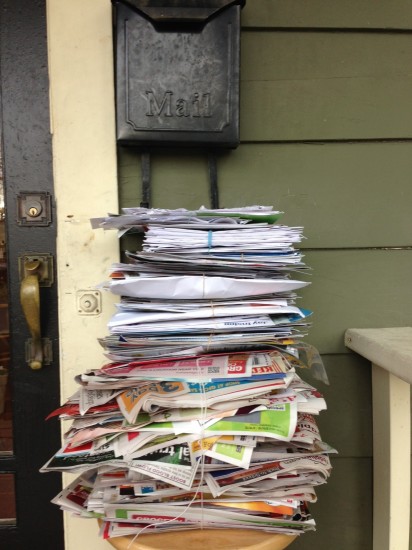
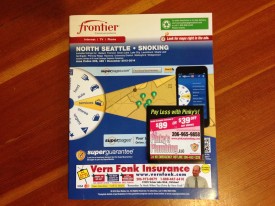
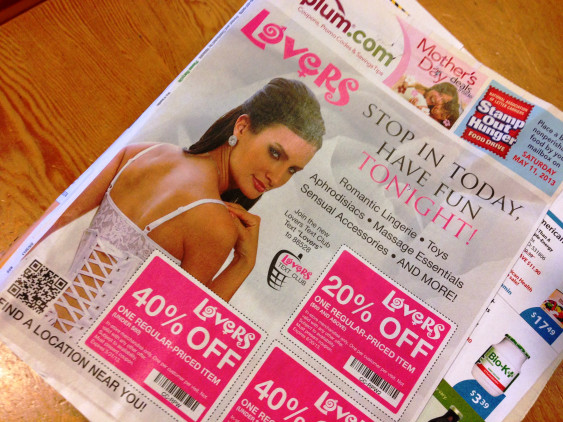
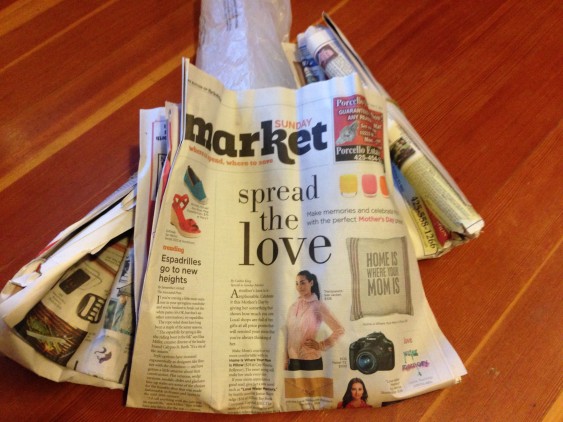
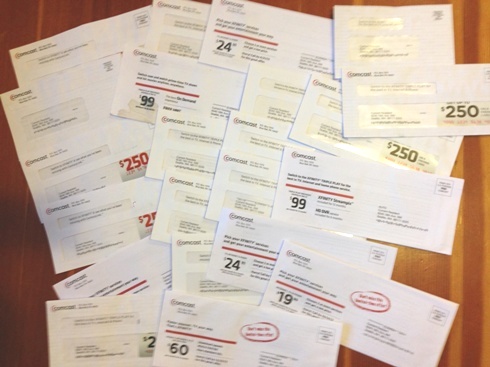

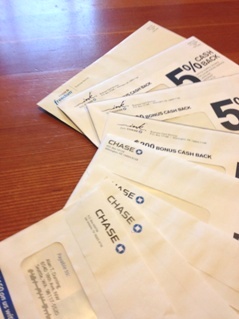
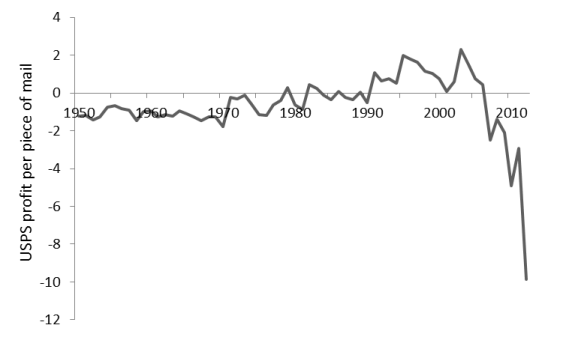
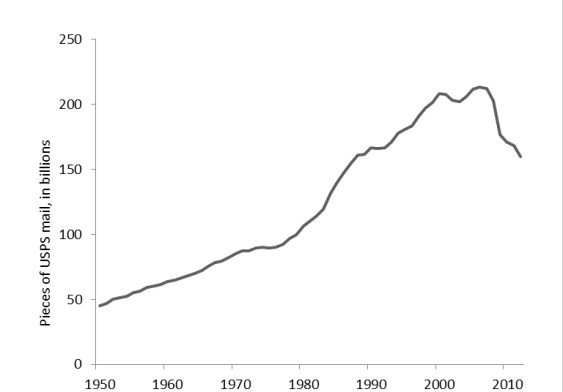
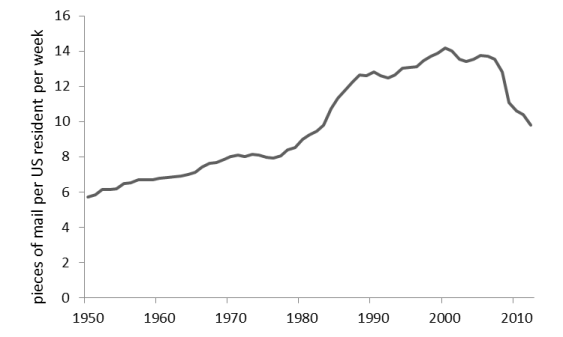







Ken C.
There is a national do not mail registry maintained by the direct mail association. Just google it. I joined it several years ago and it dramatically curtailed the junk mail I had been receiving.
Alan Durning
Unfortunately, the Direct Marketing Association’s opt-out program, to which I’ve been subscribed for many years, has proven largely ineffective in my case. For one thing, it’s voluntary and unenforceable.
Kimberly Kinchen
Same here. DMA also set up the online renewal for opting out in a way that seems deliberately designed to confuse folks into opting back in, IMO.
Ruben
Canada has a Red Dot program, which stops most of the junk mail. It is a similar situation, though, where Canada Post makes a huge part of its revenue off delivering garbage–its business model is based on garbage, and posties get a bonus for delivering it. In fact, Canada Post has even sent letters to people asking them if they want to remove their red dot and start getting junk mail again.
I did a pilot project where I stuck a Red Dot on every mailbox in an apartment building, with a note asking people to peel the sticker off if they want junk mail. 80% of people kept the sticker, so ten minutes work for me will result in over a ton less junk mail each year, year after year, in just that one building.
As you point out, this cannot be solved through individual action, the system must be changed. The thing is, there is an old and well-proven solution to this — Subscriptions. If you want to shower me with junk, you should have to ask my permission first, whether it is for groceries, phone books or community newspapers.
My only quibble though, Alan, is with the statement “Most people won’t even bother to fight.”
That really characterizes lack of action as being an individual failing–people are lazy, stupid, don’t care, are unaware, need education– etc. etc. etc. We hear this litany all the time.
My argument is that people are busy–they are coaching their kids soccer, volunteering at food banks, being a crossing guard at a school, taking care of sick parents…
And the fact is, we have just a few hours of conscious attention each day–our brain is physically limited by the need for food energy (not to mention the hours in a day). There are literally piles of studies about that. We have to use that attention to perform at work and maintain our home and relationships, so we have very little left over to go through this amazingly Byzantine process.
So, it is not that people can’t be bothered, it is that the system hates them. The system is designed to perpetuate junk mail. What we need is a Compassionate System.
And– Ta-daa! I have a paper on that. Compassionate Systems There is also a slidecast about Compassionate Systems on my website.
I gave a long talk on Compassionate Systems at a recycling conference, where I went into some vicious detail about junk mail, free papers and the Red Dot. Sadly, the video is not up yet.
Grrr. Now I am getting wound up. The thing that ticks me off about these garbage-based business models is that taxpayers subsidze them. We all pay to empty garbage cans full of Starbucks cups and McDonalds bags. We all pay for City crews to empty recycling bins full of junk mail and free papers. We are sending these businesses a cheque every time we clean up after them, and they are laughing all the way to the bank.
Here is an excerpt from my notes for that recycling talk:
“Another big publisher is Black Press, which has 170 papers including the Surrey News Leader and Richmond Review. Revenues for Black Press are half a billion dollars a year. The majority shareholder is David Black. David Black lives in this 4000 square foot 1910 mansion on Beach Drive near Victoria. Because his wife grows a lot of flowers, they were able to hold farm status, which means this property was assessed for 1.7 million dollars. I am not making this up. And taxpayers foot the bill for city crews to clean up his garbage.”
…pant..pant..pant… I get passionate about this…
Alan Durning
Excellent comments, Ruben. Thanks so much for sharing them, and for your good efforts.
I mentioned the Red Dot program in one of my earlier posts on this theme. It’s a lot better than nothing, and the USPS should offer something similar. But it’s limited in design: the red dot stops the delivery of mail that’s either to “current resident” or to all addresses in a neighborhood (CART SORT, I think, in USPS argot). I don’t believe it stops mail that’s addressed to the recipient’s name. So, a catalog addressed to “the family at” wouldn’t get delivered, but one addressed to “Alan Durning” would.
Furthermore, and more important, the red dot doesn’t stop the _printing_ of the mail, just the delivery. It means that the post office recycles the junk instead of the recipient recycling it. That’s a reduction in hassle for residents, but not in waste.
Well, there’s some feedback, no doubt. Mailers must begin to allow for red dots, perhaps even model the likely number of red dots per neighborhood, and adjust print runs accordingly.
A do-not-mail registry would provide feedback much more directly, however. It would prevent the printing, not just the delivery. And it would allow recipients to stop delivery of mail that’s directed to their name, not just to their address.
Have I understood the Red Dot program correctly?
Alan Durning
I also LOVE your project of red dotting your building. We know from behavioral economics about the enormous power of defaults. Setting the default to No Junk Mail is a powerful notion, much more powerful than a Do Not Mail registry alone. How many people — busy as we are — would sign up for a “Please Mail Me Advertising” Registry?
Ruben
Yes, the default for junk mail should be Opt In, whereas the default for healthcare should be Opt Out. The idea of a Please Mail Me Junk registry is hilarious–and it would virtually eliminate junk mail.
But in the meantime, I think red-dotting apartment buildings would be a great project for an organization like the Suzuki Foundation or another of the eNGOs. I have tested it in several buildings and know two other people who have used my notice forms, all to good effect. I had one guy ask me to put two stickers on his mailbox. There is a huge latent desire for this, but we don’t have the capacity to do all the important things we know need doing.
On the Red Dot, my understanding is the postie has a list of addresses that is periodically updated and is used when ads are sold. So, it may take a couple of weeks to trickle up, but your Red Dot does eventually result in less junk mail being printed.
Another flaw is that the only thing that gets through the Red Dot are Federal and Provincial government mailings. So, my municipal notices–which may be the most impactful to my life–are filtered out, and that is a barrier for some people.
There is a similar problem with free papers. Many people like them because they help connect to the community–events and local news. But the volume of three times a week plus an inch of flyers is too much to cope with. Again with the subscriptions–if all you want is the Sunday funnies, most papers will let you subscribe to just the Sunday, or just the weekend editions–but not so for the free papers. It is either on or off, and some people put up with more junk than they want so they can keep in touch with their city.
For me, junk mail is a beautiful example of how we tell the wrong story about behaviour change. We say change requires information, awareness, education, caring, convenience, incentives, punishment… but in fact it is physically impossible for us to deal with all the important issues using these tools. The Red Dot campaign got national coverage, it is super easy–you can make a red dot with a Sharpie–and yet I can walk into an apartment building with zero red dots on the mailboxes. Obviously there is a lot more than information and convenience at play.
What we have is enormous pent-up desire to do the right thing, to live in way that is less damaging and perhaps even regenerative. There are a lot of system changes that we can just do, and people will be perfectly happy that someone else took care of it for them.
Andy Kerr
I’ve had the best luck by subscribing to http://www.41pounds.org. It costs a few bucks, but they do all the work. I estimate a 95% reduction of unwanted mail.
Alan Durning
Thanks, Andy Kerr! Maybe I’ll try that for my 2015 edition. For now, I’ve done what I’m going to do, and now I’m going to collect and see the impacts.
Thanks for more, Ruben. Red Dot is more powerful than I realized. Is the Red Dot literally the only thing you have to do — not file a form with the post office? Just put a dot on your mail box? The postie records it and sends word up the line?
Am I right that it doesn’t touch mail addressed to me by name, only stuff that’s not by name?
You’re certainly right that an army of volunteer Red Dotters could make a huge difference. Considering how much junk mail hauling costs localities, they might even contribute money — support youth groups that do the dotting? Paid Red Dotters?
Speaking of switching the default, another campaign strategy might be to try to get the manufacturers of mail boxes to put red dots on them in advance. (I’m imagining pre-painted dots with a black sticker that says, “cover the red dot if you want ad mail.”) Or the stores that sell mail boxes. What other ideas are there for switching the default?
I’d love to see comparative figures on mail volumes per person in Canada and the US. A comparison of the rates charged to mailers, too? I imagine that postal regulations in different parts of the world yield wildly different ad-mail practices and volumes. I didn’t have time for this article to dig into any of that.
Ruben
Alan, I think the rule is you are supposed to write Canada Post a letter, but in reality it is up to the postie. I have never met anybody who had to do more than just put a sticker on their box, but if your postie really loves their junk mail bonus…
I haven’t done anything other than put up a Red Dot, and now it can be days with nothing in my mailbox. If an advertiser had my name and address, it would be delivered (I think junk is called Unaddressed Ad Mail), so the Do Not Mail list would be helpful for all the junk that shows up after a magazine sells their subscriber list.
But again, why should I have to expend my energy to avoid dealing with someone else’s garbage? We don’t expect people to put a sign in their front yard saying, “Please do not empty your garbage can on my lawn.” Why should I have to put up a sign saying, “Please don’t throw your garbage in my mailbox”? The default should put the onus on the companies generating garbage to get my permission before they send it to me. That is good for the ecosphere, and it is realistic about how behaviour changes. A Do Not Mail list is just closing the barn door after the horse has bolted.
And…you would think municipalities would be keen to reduce junk mail, wouldn’t you? But I have seen two factors that prevent that:
1) Municipalities, with their much more intimate politics, are allergic to offending business. So, the idea of cutting off the direct-mail advertising channel makes everybody turtle.
2) Paper is the most valuable fraction of the recycling stream, and usually subsidized the plastics and definitely the glass. I have seen recycling coordinators argue against junk mail reduction projects because it would eat into the money they make from selling recyclables.
I love the idea of selling mailboxes with a red dot already painted on. What a way to communicate an injunctive social norm – imagine the display in the hardware store…
Comparing junk mail rates would be interesting. I am shocked with the size of your stack even after all the work you have put in. There could be a nearly endless well of data though – Canada Post will sell junk mail delivery down to very fine-grained areas. Advertisers can really target their demographics, and that drastically changes the height of your stack of junk.
Callie Jordan
As Alan said: “Most people won’t even bother to fight. Individual, voluntary action is a help, but more effective solutions must operate on a larger scale.”
The mail preference system (MPS) maintained by the direct mail assn is similar to greenwashing; not only does it require that individual action that Alan rightly notes as unlikely, it costs $5 to register. And, as they say on their website: Although registration with MPS will help to reduce the amount of unsolicited mail that you receive, it will not stop all unsolicited mail. You may continue to receive mail from companies with which you already do business and from non-DMA organizations which do not use MPS. In addition, you may continue to receive mail from local merchants, professional and alumni associations, political candidates, office holders and mail addressed to “occupant” or “resident.”
That’s an awful lot of mail to recycle, most likely unopened.
Alan Durning
Thanks for your input, Callie. I’d forgotten that MPS now charges. It used to be free, but I never remember it being terribly effective, in my personal experience.
David Hopkinson
If anybody mentioned spam, I didn’t notice. Spam is the point.
Junk mail is hardcopy spam, from people who could care less about those who don’t respond. The spam shotgun is the weapon they have, so they will keep using it, because they continue to believe that they are getting enough responses to make it worth their while. They only thing that will change that is eliminating the payoff. This could be done, but it’s just not a high priority politically and the USPS is in a death spiral.
Alan Durning
Interesting points, David. I don’t think USPS’s troubles are a death spiral, but I do think it’s an existential crisis. The institution needs a wholesale reconceptualization. If anything kills it, it’ll be the US Congress’s unwillingness to free it enough to adapt (see Brie’s comment below).
Rob B.
How about if the USPS begins to require a check box on all mail qualifying for their bulk mail rate. If the recipient checks the box, it indicates they don’t want to receive such mail from the sender. They put the piece back in the mail, and the post office charges a first class rate to the original sender to deliver them the “no thanks” message.
This would give mail box owners an easy way to selectively reject junk mail, junk mailers an effective way to winnow out folks that actually want the stuff, and the post office added first class mail revenue from handling the rejected mail. Seems like a win, win, win.
Alan Durning
Good thinking, Rob P.
Debbie Smith
I found this website to be extremely helpful: http://www.consumer.ftc.gov/articles/0262-stopping-unsolicited-mail-phone-calls-and-email
I opted out of pre-approved credit card offers, which was the most annoying junk mail I was receiving. It has been successful.
Alan Durning
Excellent suggestion, Debbie. Thanks.
Brie Gyncild
I, too, consider that weekly bundle of ads – which go immediately to the recycling bin – a colossal waste, and I’m irked each time I get it. Since you finally got them to stop sending them to you, I’ll hope for similar results.
And I love USPS. I think it’s a vital part of democracy to have a delivery service for everyone, in every community, that isn’t a private entity. But you just can’t talk about the USPS struggling without mentioning the real reason for its troubles – the ridiculous burden Congress has placed on it to fully fund 75 years’ worth of employee pensions in advance. Something no other agency, and certainly none of its private competitors (who also get to pick and choose where they’ll deliver and when and for how much) have to do. Remove that burden and the crisis goes away. According to this Washington Post article, without that burden, the USPS would have a 1.5 billion dollar surplus. http://www.washingtonpost.com/blogs/wonkblog/wp/2013/02/06/the-post-office-is-defying-congress-by-halting-saturday-deliveries-why/. There are efforts to undo the unreasonable requirement (led by Bernie Sanders, among others). If we can manage that, the USPS won’t be so desperate to cut deals with the folks who shower us with useless paper.
Alan Durning
Great link, Brie. The Esquire article linked in your link is also excellent. Thanks for your comment.
bc
Haven’t tried it yet myself, but there’s PaperKarma.
Deb Rudnick
I just started using paper karma! I love that its a super-quick click-and-send process. We shall see if it actually makes a difference to my junk mail pile. Another great resource I didn’t see in your post, though maybe I missed it, is ForestEthics’ donotmail information: http://donotmail.org/downloads/ClimateReport.pdf.
I was JUST blogging about this same issue Alan, so glad to read your post and know that I have partners in passionately fighting junk mail!
Alan Durning
Thanks for the Paper Karma and Forest Ethics link — and for your work!
Faith
Alan, you mentioned the barrage of mail you get from non-profits (UNICEF and LCV). I cannot believe the copious quantities of mail I receive from at least a couple dozen non-profits in any given month. It has literally caused me to contribute less to them or any new non-profit that comes on my radar screen. I think to myself, “I’d love to contribute to this cause, but I don’t want to get more mail from them or any other organization that they share/lease/sell my information to.” And what they send also makes me wonder about how they spend the money they raise – calendars, mailing labels, greeting cards, etc. When I have given money in the last 10-15 years, it has just about always been electronically so they have my e-mail address – why the switch to contacting me by snail mail???
george
I love junk mail with SASE – all the contents get stuffed, unread into the return envelope & sent back to the advertiser. The advertiser pays the PO – good for everyone, right?
Alan Durning
I had a voice mail message at home the other day. It came from Frontier, deliverers of the unwanted phone book. It included an actual apology. The contractor who delivered the book apparently didn’t read the opt-out list correctly. I have stopped skewering the Frontier voodoo paper doll.
Ann Dasch
I find that a lot of the unwanted mail I get is from non-profits I have donated to, asking for more. Anyone got a suggestion for gracefully saying “I gave what I can and will do so again, when I can, if you don’t keep asking.”
Jessica
I live in Seattle and have successfully used CatalogChoice to stop unwanted junk mail from a number of sources. One of the first requests I made was to stop the Seattle Times savings source flyers. What a relief it was when those stopped arriving!
I have not yet tried to use CatalogChoice to stop Red Plum mailings, but I have noticed something disturbing on the last few Red Plum wads I have received. They are not putting my address on the bundles anymore. Now I am wondering how I can request that the Red Plum mailings be stopped to my address if the postal carrier is just stuffing bulk Red Plum mailings in everyone’s mailbox rather than delivering each flyer by address.
Jessica
I live in Seattle and have successfully used CatalogChoice to stop unwanted junk mail from a number of sources. One of the first requests I made was to stop the Seattle Times savings source flyers. What a relief it was when those stopped arriving!
I have not yet tried to use CatalogChoice to stop Red Plum mailings, but I have noticed something disturbing on the last few Red Plum wads I have received. They are not putting my address on the bundles anymore. Now I am wondering how I can request that the Red Plum mailings be stopped to my address if the postal carrier is just stuffing bulk Red Plum mailings in everyone’s mailbox rather than delivering each flyer by address.
Has anyone else experienced this?
Harrison Mitchell
Jessica,
I have been experiencing the same thing for 3 years now at my current address. I would unsubscribe every few weeks from Redplum, only to keep receiving them. I finally looked at the address and realized the postal carrier doesn’t read the address, they just stuff them in everyone’s mail box. I literally just confronted another new postal carrier about it. He actually admitted that “everyone gets them, we don’t look at the address.” I informed him that he’d never see my address on one and he NEEDS to look at the address.
I’ve made about 20 calls to the post office in the last 2 years to make it stop, but all they do is “send an email” to someone at the local office, which goes ignored every time.
I’m convinced there is no way to stop it, as USPS employees are largely incompetent and just don’t care.
Jessica
Sorry for the double post. The first one didn’t appear at first and I thought I had not properly submitted it.